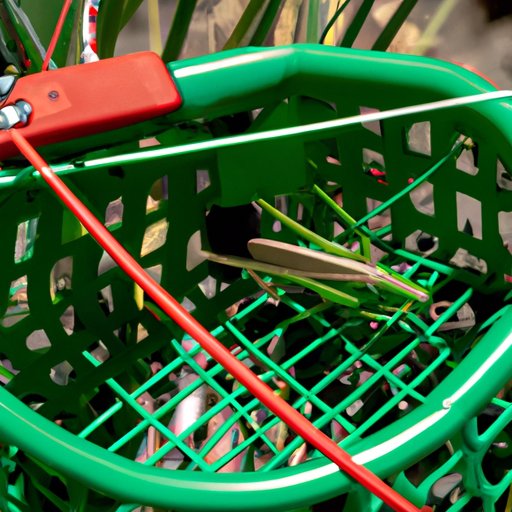
I. Introduction
Grasshoppers can be a nuisance, especially when they invade your gardens and crops. They are known to cause severe damage to plants, which can lead to significant losses for farmers and gardeners. Fortunately, there are several ways to get rid of grasshoppers and prevent them from wreaking havoc on your garden or farm. In this article, we’ll explore natural and chemical solutions, DIY traps, companion planting, and mechanical control measures that you can use to control grasshopper populations.
II. Natural Remedies
If you prefer natural remedies, there are several options available to you. One effective natural remedy is garlic spray. Garlic spray contains sulfur compounds that help repel grasshoppers. To make garlic spray, mince two garlic bulbs and mix them with a gallon of water. Let the mixture sit overnight, then strain and bottle it. Spray the mixture on your plants to repel grasshoppers.
You can also plant insect-repelling plants, such as marigolds, catsnip, and mint, around your garden. These plants emit scents that grasshoppers find unappealing. Additionally, they attract beneficial insects that prey on grasshoppers. Ensure that you maintain these plants by watering and fertilizing them consistently.
III. Chemical Solutions
Chemical options can be both short and long term. Sevin Dust and carbaryl-based products are effective chemical solutions that can be used to control grasshopper populations. These products work by disrupting the nervous system of the grasshoppers. Although they are effective, they are also toxic substances and should be used with caution.
When using these products, ensure that you follow the instructions on the label. They should be applied during early morning or late evening hours when the grasshoppers are most active. You should also wear protective gear, such as gloves and masks, when handling these products to avoid any harmful effects that may arise.
IV. DIY Traps
DIY traps are an effective way to control grasshoppers. Baited traps work by attracting grasshoppers with a bait that they like, such as sweet potatoes. Once the grasshoppers enter the trap, they are trapped and cannot leave.
Non-baited traps, such as pitfall traps, work by trapping grasshoppers that fall into them. You can make pitfall traps by digging small holes in the ground and covering them with cardboard or wood. When the grasshoppers jump into them, they are trapped and cannot escape.
When setting up these traps, ensure that you place them strategically around your garden or farm. Additionally, you should check them regularly to remove trapped grasshoppers and to refill any bait that may have run out.
V. Companion Planting
Companion planting is another effective way to control grasshopper populations. You can plant certain species alongside your garden as a barrier against grasshoppers. Plants such as alliums, sunflowers, and buckwheat have repellent properties that repel grasshoppers from your garden.
You should ensure that you maintain these plants by watering and removing weeds from around them. Additionally, you should ensure that they are planted around the perimeter of your garden or crop field.
VI. Mechanical Controls
Mechanical control measures, such as handpicking, using nets, fences, and water spraying, are effective ways of controlling grasshopper populations. Handpicking involves physically picking grasshoppers from plants and placing them in a bucket of soapy water. Nets and fences can be used to block grasshoppers from accessing your garden or farm. Water spraying can also be effective, as it physically removes grasshoppers from plants. It would be best to apply it during the early morning hours.
When using mechanical controls, ensure that you are gentle, as rough handling can damage the plants and accidentally kill other beneficial insects. Additionally, you should check plants regularly to ensure that grasshoppers have not made a return.
VII. Conclusion
Grasshoppers can be a significant nuisance and can cause severe damage to your gardens and crops. However, there are several effective ways to control grasshopper populations. These include natural and chemical solutions, DIY traps, companion planting, and mechanical control measures. Remember to follow the instructions and precautions for each measure to avoid any harmful effects from chemicals and rough handling. You can take preventive measures, such as maintaining plants, keeping your garden or farm clean, and conducting regular inspections, to keep grasshoppers away.
By using these measures, you can effectively control grasshopper populations and protect your gardens and crops from significant damage.




